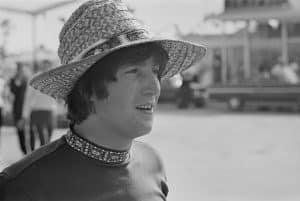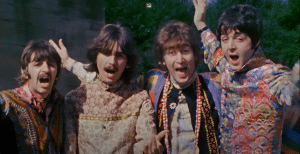5 Classic Rock Music Videos That Would Be Controversial Today

via Enhanced Music Videos / YouTube
Rock music has always pushed the boundaries, not just in sound but also in the visuals that accompany the songs. In the golden era of rock, music videos were a powerful form of expression, often delving into themes and imagery that were provocative, challenging, and sometimes outright controversial. Here, we dive into five classic rock music videos that, if released in today’s climate, might stir more than just the pot of creativity—they might ignite a firestorm of debate.
Soundgarden – “Jesus Christ Pose”
With “Jesus Christ Pose,” Soundgarden ventured into the arena of controversial art by incorporating religious imagery to make a statement on celebrity martyrdom. The video’s depiction of a woman in a crucifixion pose struck many as blasphemous, igniting a firestorm of criticism and threats against the band. Despite the controversies, the vocal performances, particularly Chris Cornell’s, showcased the band’s musical prowess, cementing the song’s place in rock history. The use of such potent imagery today would undoubtedly provoke intense debate, reflecting society’s ongoing sensitivity to the portrayal of religious figures and symbols.
Nine Inch Nails – “Closer”
The “Closer” music video by Nine Inch Nails is an unflinching journey into a dark, surreal world filled with controversial and disturbing imagery, including scenes that some interpreted as blasphemous. The visual montage, featuring a crucified monkey among other jarring visuals, sparked outrage for its perceived mockery of religious symbols. The video’s enigmatic and unsettling nature leaves many viewers perplexed, a testament to Trent Reznor’s intention to provoke thought and emotion. While it earned critical acclaim for its artistic expression, the video’s graphic content and challenging themes would likely still face backlash today, underscoring the tension between artistic freedom and societal norms.
Van Halen – “Hot For Teacher”
Released to wide acclaim, “Hot For Teacher” quickly became notorious for its risqué portrayal of classroom fantasies. The music video showcases a young boy, styled after the iconic nerdy character Walton, navigating through his school day, only to be met with highly sexualized representations of teachers. This depiction plays into stereotypes that blur the lines of professionalism and objectification, especially concerning women in the teaching profession. The video, while a product of its time, would likely face criticism today for promoting inappropriate student-teacher dynamics. Nonetheless, the musicianship, particularly Eddie Van Halen’s guitar solo, remains celebrated, marking the song as a classic despite its contentious visual narrative.
Nirvana – “Heart Shaped Box”
Nirvana’s “Heart Shaped Box” plunges into a surreal and symbolic landscape, filled with vivid, often disturbing imagery that challenges traditional narratives. From the depiction of a child dressed as a KKK member to unsettling religious allegories, the video leaves much to interpretation, sparking curiosity and controversy in equal measure. Kurt Cobain’s cryptic artistry invites viewers to explore themes of disillusionment, faith, and redemption, though not without discomfort. In the contemporary context, this video would likely become a focal point for discussions on the boundaries of artistic expression and the power of visual media to confront and unsettle societal norms.
Frankie Goes to Hollywood – “Relax”
“Relax” by Frankie Goes to Hollywood broke new ground with its overt sexuality, both in its lyrics and its visual representation, landing it in hot water with broadcasters like the BBC. Featuring scenes set in a nightclub where the lines between fantasy and reality blur, the video includes provocative imagery that explores themes of sexuality, including homosexual encounters, which were considered extremely controversial at the time. Beyond its sexual explicitness, the video indirectly references the AIDS crisis, a topic that was taboo and misunderstood in the early ’80s. While the song was a hit, the video’s bold exploration of sexual freedom and identity would still be considered provocative today, challenging viewers to confront their biases and the stigma surrounding sexuality and health.






















